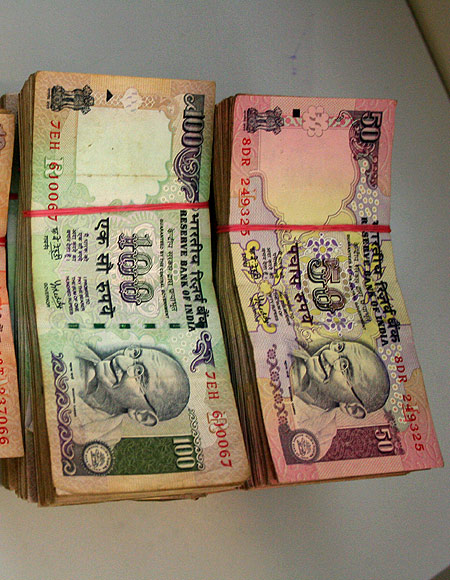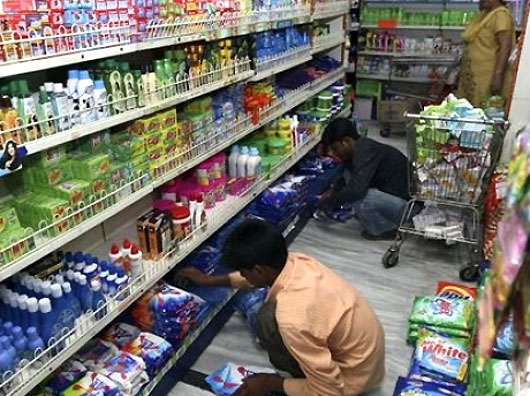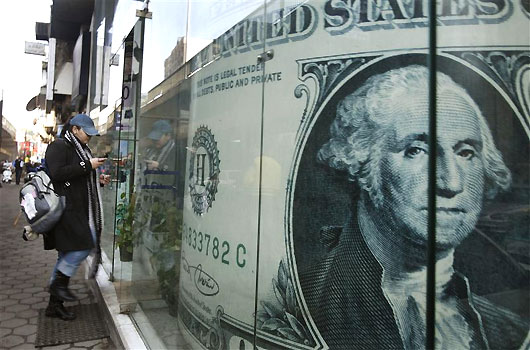
A weakness in the local currency makes imported goods expensive in the domestic market, while domestically produced goods become cheaper in dollar terms.
The rupee’s fall to new all-time lows over the past two weeks might have come as a shock to many analysts and policymakers. But a deeper look into India Inc’s finances seems to suggest that this was waiting to happen.
A ground for the currency’s depreciation was being built over the past few years, during which Indian companies’ import intensity rose sharply. A devaluation of the currency, in a way, acts as a natural adjustment tool, changing the relative price of locally manufactured goods against their imported substitutes.
Compared to 18.6 per cent in 2002-03, the share of imports in Indian firms’ operating expenses surged to 30 per cent in 2011-12.
During the same period, however, exports failed to keep pace. As a result, from being a net earner of foreign exchange ten years ago, India Inc turned into a net spender of forex.
A Business Standard analysis of a sample of 559 non-oil and non-financial BSE-500, BSE Mid-Cap and BSE Small-Cap companies reveals that forex expenses of these firms (on profit & loss account, including direct imports, royalty payments, etc) grew at a compound annual rate of 26 per cent between 2002-03 and 2011-12. Corporate forex earnings during this period rose at 20.4 per cent CAGR (see chart).
Contrary to popular perception, a rise in import intensity is not restricted to capital goods or energy-intensive industries. Except a few sectors, such as IT services, pharmaceuticals, agro chemicals, hotels and textiles, all others are now net consumers (or importers) of foreign exchange.
Click on NEXT for more...

A weakness in the local currency makes imported goods expensive in the domestic market, while domestically produced goods become cheaper in dollar terms. So, Indian consumers get an economic incentive to lower demand for imported products, and Indian producers to export more.
Taken together, the process is likely to bridge the gap between Indian firms’ forex expenses and earnings.
“Depreciation is surely an adjustment mechanism for an economy with persistent and rising trade deficit. But I am not sure if this alone will be sufficient to narrow India’s current account deficit,” says Indranil Pan, chief economist, Kotak Institutional Equity.
Hindustan Unilever (HUL), the country’s largest FMCG firm, has turned a net spender of forex from being an earner until four years back.
In 2011-12, HUL’s forex expense stood at around Rs 1,366 crore (Rs 13.66 billion) - nearly three times its forex earnings during the period.
The trend is similar at other foreign-owned consumer goods majors like Nestle, Colgate-Palmolive and P&G, too. The only exception to the preference for imported consumer goods seem to be home-grown firms - ITC, Godrej Consumer, Marico, Dabur, ITC and Emami, among others. These firms have remained net exporters through this period.
This gives them an edge over MNCs in a scenario where the rupee remains weak, making imports dearer.
Click on NEXT for more...

The forex gap is even wider in the case of consumer durable companies like Videocon, Havells, Bajaj Electricals and Whirlpool.
The combined import bill of these companies has risen at 35.5 per cent CAGR over the past decade. Their forex expenses now account for nearly 26 per cent of their total expenses, against 11 per cent in 2001-02.
The trend is little different for capital goods firms. In 2011-12, BHEL’s import bill was nearly seven times its forex earnings; forex expenses accounted for a quarter of its manufacturing expenses. In the same year, Siemens India’s forex expenses stood at three times its forex earnings.
The situation at ABB, Alstom India and Bharat Electronics, too, was quite similar. Construction and infra major Larsen & Toubro also turned a net importer from a net exporter a few years ago.
Even India’s traditional exports, such as textiles, have not been untouched by the changing phenomenon. The forex earnings for 23 textile companies in our sample rose at 19.5 per cent CAGR, while their forex expenses rose at a higher rate of 25.5 per cent CAGR during the period.
Click on NEXT for more...

This could have been a result of India’s growing competitiveness due to a relative over-valuation of the rupee against the dollar in the past decade. India’s cost of living during the decade, as measured by Consumer Price Index (CPI) for industrial workers, cumulatively rose 113 per centm while that in the US rose just 24.4 per cent.
However, this loss of rupee purchasing power was not fully reflected in the rupee-dollar exchange rate. In the ten years ended March 2013, the rupee depreciated only 12.5 per cent against the dollar, while the total weakness after taking into account the recent fall works out to 23 per cent.
This was made possible by foreign capital inflows, such as those from FIIs, external commercial borrowings, FDI, etc. FIIs have cumulatively invested $120 billion in Indian equities in the decade. Many economists expect capital inflows to come to the rescue.
“There is no immediate risk to the capital flows into India. This will provide support to the rupee. It might remain volatile, as has been the case in last two years, but downside risks look limited from the current level,” says CARE Ratings Chief Economist Madan Sabnavis.
However, if foreign investors don’t come to the aid, the rupee-dollar exchange rate could soon start reflecting the gap between the rates of retail inflation in India and its major trading partners.
There is evidence that depreciation has already started effecting the adjustment. There has been a small decline in India Inc’s import intensity over last two years and the forex earnings in sectors like pharma, IT and agro chemicals have begun to accelerate. This would need to gather pace if the rupee’s troubles have to end anytime soon.